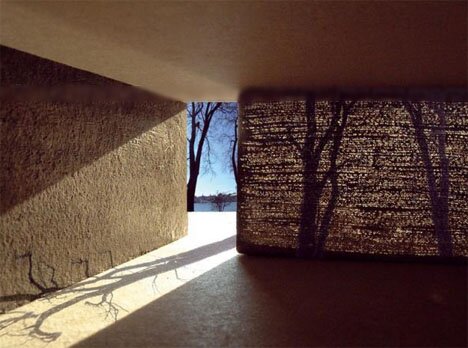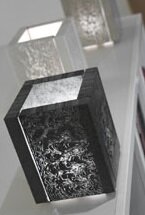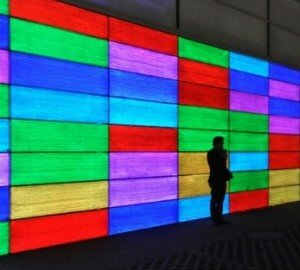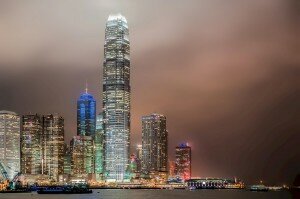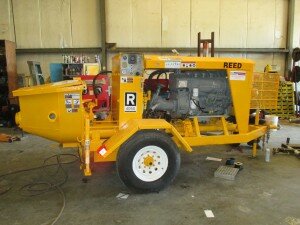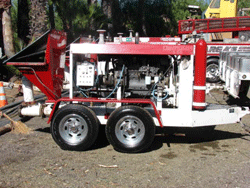Innovators in the concrete industry never cease to surprise us. When we first heard of “translucent concrete” we weren’t quite sure how these two words could go together! After all, concrete conjures images of heavy, solid, rough material that blocks just about everything and especially light. What if concrete could let light through? What if a wall could also turn into a window to the outside?
So what is this light-transmitting concrete?
As in all new concrete products, they use variations from the traditional ingredients. One of the main differences is the use of translucent alternatives, like glass or plastic fragments to replace conventional aggregates and let light through with the use of resins or clear glue as binding agents. Another formula involves mixing white Portland cement with white silica sand and fiber glass or plastic rods as reinforcement. Various methods have been developed and patented as a result. In most cases, a thin layer of concrete is poured manually in a mold, then fiber glass is placed on top and another concrete layer covers it. This method allows light to travel from one side of the block to the other.
Another benefit of this promising material is its ability to greatly increase insulation for buildings in harsh regions. This means that privacy is retained while allowing daylight in.That’s pretty cool for Northern regions of the world that suffer from lack of lighting for half the year!
Who are some of the pioneers?
Dr. Price from the University of Houston is not only looking into making translucent concrete, he wants to make transparent concrete made from recyclable materials that can be poured on site (currently it is only available in pre-cast bricks or panels). His vision is that in the future, cities could glow from within from translucent (and eventually transparent) zones within curving walls. A tall order that would undoubtedly revolutionize the building industry.
Other players that are selling blocks and panels include Impact Lighting Inc, Lucem (in Germany), Litracon (in Hungry), just to mention a few.
Usages for translucent concrete. Imagine the possibilities…
What started as a cool medium mostly used in art exhibits, in museums, was then introduced into furniture items like desks, lamps, park benches, counters and now found its way into building walls and floors.
At the Shanghai World Expo in 2010, the Italian Pavilion featured its first application in buildings. When blocks of translucent concrete were inserted into a wall in various geometric positions, soft natural light was let in during the day and a gentle glow appeared at night. The building was transformed into a soothing living structure where the separation between the inside and the outside had been greatly reduced.
In 2013, the German company Lucem erected the first led infused concrete wall, with 136 color-changing led panels controlled with DMX technology via internet! With one click, these same color panels can be turned into one large display wall that can be used for communication and advertising. The age of giant billboards make soon be over!
What if sidewalks could be lit at night? This is what they did in Stockholm and pedestrians can see their path by simply looking down.
It could be use to bring natural light in underground buildings like train or subway stations. Think about safety uses, anything that could be lit from below, like speed bumps, emergency signs in case of power outage etc.
What if concrete could conduct electricity? It can and as a result airport runways and drives could automatically eliminate snow and ice as it builds up. That’s just one practical application that would save billions of dollars in cold regions of the world!
Some challenges and much promises
Being such a novelty material, translucent concrete is only available in prefabricated blocks and panels. It may take a few more years for it to be poured on site. This makes its price 4-5 times that of its conventional counterpart. However, translucent blocks can be inserted in wall and still obtain the natural lighting effect.
One experimental case had structural strength issues and with the help of chemical additives the problem was corrected. Most formulas (like the Lozoncze’s concrete block from Hungry) have shown impressive compressive and tensile strength without steel reinforcement. Translucent concrete can in fact be used a structural support!
If you are a hands-on person and want to play with the idea of translucent concrete, check out this diy article on the subject.
Getting major concrete manufacturers, engineers and architects to experiment with translucent concrete will lead to its broader adoption and more amazing applications. The future of concrete is bright and truly promising!
If you have any questions about concrete equipment, give us a call.
References:
http://www.impactlab.net/2009/03/07/litracon-see-through-light-transmitting/
http://www.lucem.de/index.php?id=219&L=1
http://www.economist.com/node/779421
